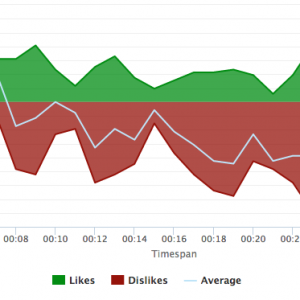Ad Testing: Why It Matters and How to Successfully Perform It
You need an ad that you know will succeed, whether you want to improve sales or create brand awareness. There’s no better way to be sure about an ad than to examine how successfully it’s been tested.
Ad testing is a type of market research and the process of displaying various advertisements to a sample of your target population and soliciting feedback from them. You may perform ad tests on a complete ad or particular elements and get feedback on everything from how noticeable the ad is to how convincing it is.
In this article, we will be discussing the reasons why ad testing matters and how you can successfully perform it. Let’s begin!
Why Ad Testing Matters
Customers spend substantially large amounts of money on advertisements (about $500 billion is spent on commercials globally). This trend is only expected to continue when you use pre-launch testing to zero in on certain ad concepts, your chances of getting a good return skyrocket.
Here are some more reasons why ad testing matters:
1. It gives you data to back up your decisions.
Nobody can deny the existence of hard data. If you can show which ad concepts are the greatest, convincing colleagues to proceed with the winning advertisements should be simple.
2. It provides ideas to improve.
It’s probable that your winning advertisement isn’t perfect. Let’s pretend you’re interested in copy testing. Your audience enjoys the winner, but its message isn’t entirely convincing. This information allows you to improve on content that is already producing compelling results.
3. It makes you understand your market.
Once you’ve received your replies, you can sort them to observe how different groups (for example, males vs. females) react to each of your advertising. This is one of the many procedures done in the different types of advertising research.
These insights can help you create unique commercials for different groups or create a single ad that seeks to include characteristics that each group enjoys.
4. It empowers you to make better decisions.
Another advantage of ad testing is that it allows your company to iterate more quickly. The ability to do so is linked to agile market research, which incorporates many rounds of data collecting over time to accommodate for an organization’s changing demands.
Agile research allows your team to make better judgments more frequently and to rely less on insight firms, agencies, and other sorts of businesses.
How to Run an Ad Test
1. Determine the stimuli to test
Videos, photos, copy, audio, or a mixture of these elements can be used as stimuli. Consider the substance of your stimuli when you decide on the formats they’ll take, depending on where they’ll be utilized. For example, instead of Facebook or Google search ads, you might wish to target professional networkers using Linkedin ads.
To acquire a realistic assessment of your target audience’s preferences and opinions, your team should aim to use at least three stimuli every test. However, the quantity of stimuli you select is also determined by how you intend to display them.
2. Pick the metrics you want to measure
What distinguishes one ad from the next? Appeal, credibility, buying intent, relevancy, and distinctiveness are some of the indicators you might use to help you make a decision.
Your circumstance determines the importance of each metric. Assume your ad’s primary purpose is to affect sales. The most important metric may then be purchase intent. If the goal is to differentiate the brand, however, distinctiveness may take precedence.
A Likert scale can be used to measure any metric in your ad testing survey. “How (metric) is the ad?” is a formula that can be used. Your response options range from “very (metric)” to “not at all (metric).”
3. Send your survey to your target audience.
Only after your target audience has evaluated your adverts can you assess their quality. Find a group of people who fit your target profile and give them the option of providing feedback in one of two ways.
Firstly, a focus group is a good option since it allows you to get in-depth input on a variety of different questions. Focus groups, in another perspective, can be expensive to organize, and you won’t be able to get feedback from a representative sample of those who will eventually see your commercials.
Another option for you is to use Survey Monkey. Its market research panel lets you decide who you want to target, how many individuals you want to interview, and then collect feedback from them in minutes. This technique is less expensive than a focus group because you can contact more individuals for less money, but you may not be able to get detailed input.
4. Analyze the responses
When collecting responses, im-market testing is one option you may try. This strategy brings your idea to life and measures its success through A/B testing (where a certain percentage of people see each ad).
In-market testing is helpful because it reveals how people react to advertisements in the real world. However, because some of your thoughts may perform poorly, it might be a more hazardous and costly option.
Ad Test Evolution During Different Phases of the Product Life Cycle
The concept of doing several ad tests throughout the product life cycle is based on agile market research, which incorporates frequent data collecting cycles to cater to an organization’s changing needs over time. It provides a simple method for conducting research and helps your team to make better decisions more frequently.
Final Thoughts
You did an excellent job! You’ve learned why ad testing is so crucial, explored how to conduct your test, and even a few strategies to ensure that your future tests go successfully. Now you fully know the importance of testing an ad before launching so you can gain vital insight into its creative execution.
This is crucial to ensure that your campaign outperforms those currently in place. Your new concepts are tested against existing ones as well as competitors. You may now relax, knowing that the days of releasing high-risk advertisements are behind you.








